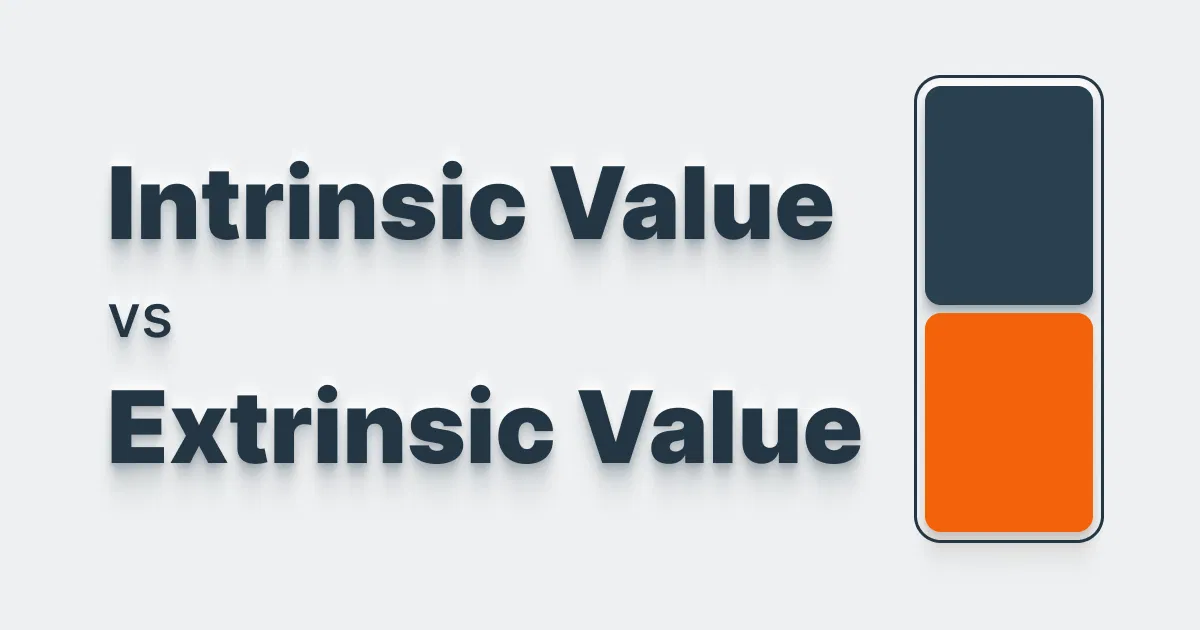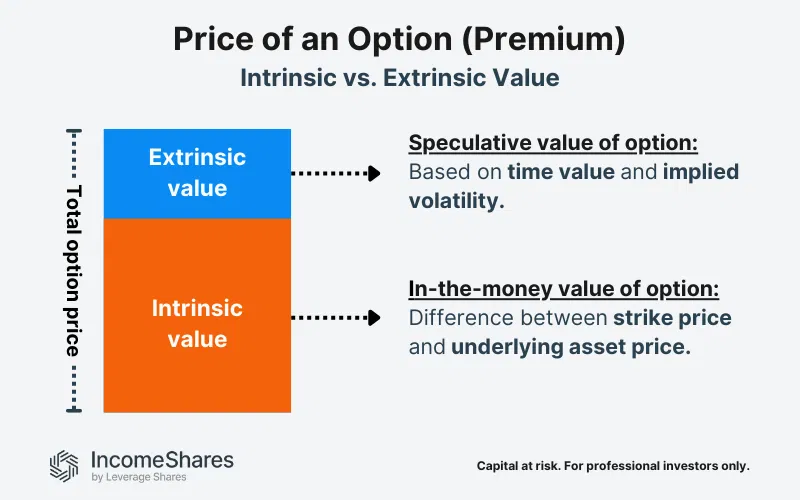.webp)
Author
Jonathan Hobbs, CFA
Date
02 Dec 2024
Category
Market Insights
Intrinsic vs Extrinsic Value in Options: A Simple Guide
Your capital is at risk if you invest. You could lose all your investment. Please see the full risk warning here.

When analyzing options, their value is made up of two core components: intrinsic value and extrinsic value. In this guide, we’ll look at intrinsic vs extrinsic value – and where they fit in with options pricing.
What is intrinsic value?
Intrinsic value is the real, in-the-money value of an option. In other words, it’s the financial payout if you immediately exercised the option. For call and put options, this would be the difference between the strike price and the current price of the underlying investment.
- Call options have intrinsic value if the stock price (underlying investment) is above the strike price. The bigger that difference, the more in-the-money the call option is, and the higher its intrinsic value.
- Put options are the opposite: they have intrinsic value when the stock price is below the strike price. Again, the wider that gap, the higher the intrinsic value of the option.
If the option is out of the money, you can’t exercise it. So, the intrinsic value is zero.
Example: Tesla call option
Suppose Tesla is trading at $330, and the strike price of a Tesla call option is $300. In that case, the intrinsic value is $30 ($330 stock price – $300 strike price). But if Tesla is trading at $290, the option is out of the money – so its intrinsic value is $0.
What is extrinsic value?
Extrinsic value is the “speculative portion” of an option’s price. It’s the part of the premium that traders pay for the potential that the option will gain intrinsic value before expiration.
Extrinsic value depends on two main factors:
- Time value: Options with more time to expiration have higher extrinsic value. When there’s more time, there’s a greater chance the stock price will move in a profitable direction for the option.
- Implied volatility: Higher volatility increases extrinsic value. When the stock price moves around more, there’s more chance it could move above or below the strike price. This can make options more attractive for traders, so they’re willing to pay higher premiums for them.
Example: Amazon put option
Amazon stock is trading at $200, and a put option with a $250 strike price is priced at $60 (premium). Here, the intrinsic value is $50 ($250 – $200). Since the option premium is $60, the remaining $10 represents the extrinsic or “speculative” value. In other words, the $10 reflects what the market thinks about its time value and implied volatility.
How intrinsic and extrinsic value add up
The total price (or premium) of an option is the sum of its intrinsic and extrinsic value. Here are two examples:
- An Apple stock call option trading at $25, with $20 intrinsic value, has $5 extrinsic value ($25 – $20).
- A Coinbase put option priced at $10 is out of the money, so its intrinsic value is zero. Therefore, the $10 premium is all extrinsic value.
In other words, the extrinsic value of an option equals the premium minus its intrinsic value. Since you know the premium, and the intrinsic value is easy to work out, you can always find the extrinsic value of the option.

To learn more about how options are valued, check out our guide to Black-Scholes options pricing.
Key takeaways
- The price of an option (its premium) equals its intrinsic value plus extrinsic value.
- Intrinsic value is the “in-the-money” portion of an option. It shows the financial benefit the option holder would get if they exercised the option immediately.
- Extrinsic value is the speculative portion of the option price. It’s influenced by time and volatility.
Your capital is at risk if you invest. You could lose all your investment. Please see the full risk warning here.
Related Products:
Strategie
Barbesicherte Puts + Eigenkapital
Ausschüttungsrendite
52.64%
Strategie
Barbesicherte Puts + Eigenkapital
Ausschüttungsrendite
34.24%
Strategie
Barbesicherte Puts + Eigenkapital
Ausschüttungsrendite
40.57%
Strategie
Barbesicherte Puts + Eigenkapital
Ausschüttungsrendite
155.64%
Strategie
Covered Call
Ausschüttungsrendite
16.47%
